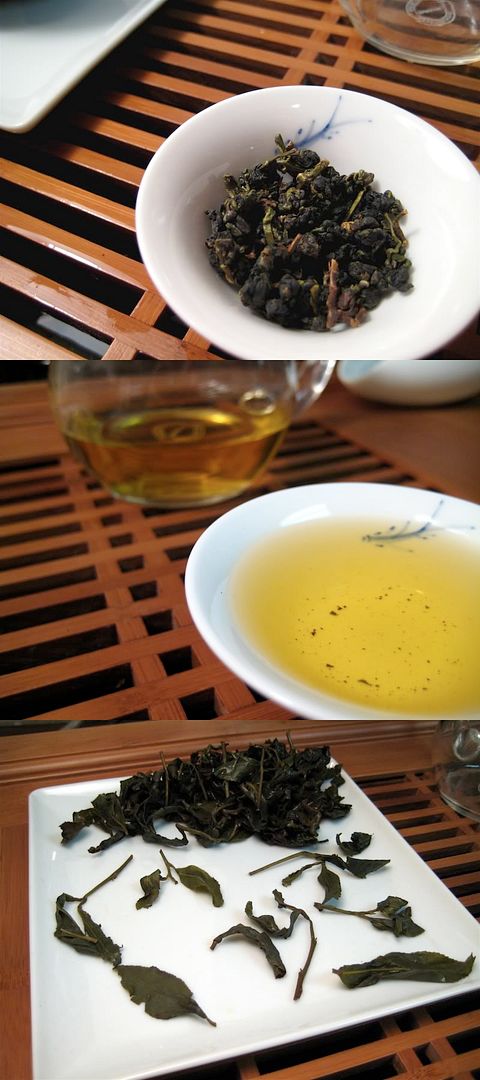 Class: Oolong
Class: OolongOrigin: Pinglin, Taipei, Taiwan
Year: 2007 Spring
Vendor: Aura Teas (Product page)
Price: &7.80 (20g) / $2.90 (6g)
This is another tea from Aura Teas, and once again I am pleased. To be candid, I haven't tried many baozhongs, nor do I think I really possess much ability in distinguishing them. Still, I'm pretty confident this is a good tea.
The dry leaves are– in true baozhong form– long, twisted, and bright green. As a side note, I think baozhong leaves are some of the most aesthetically pleasing out there (as an aside during my side note, "aesthetically pleasing" may indeed be the most diluted, sterile way to say "beautiful," but I felt like a change of pace). I didn't think to take a whiff of the dry leaf– oops.
I used the whole packet, around 6g, in one shot (in a 100mL gaiwan). I don't know if it's just me, but I like baozhong brewed with lots of leaf. I try to gauge it so the leaf comes just up the gaiwan lid when wet, but not enough to lift the lid at all. I also use boiling water, even though it looks fairly fragile, and roughly 30s infusions. It may sound like this would be murderously strong (or maybe not), but it's really not.
On the contrary, there is only the slightest floral/clean astringency. I think I've mentioned this before, how sometimes astringency can taste similar to the taste of perfume– not related to scent, just the feeling on the tongue when you walk through a cloud of it. Regardless, I imagine you could brew this tea without any astringency if you prefer, just use less leaf.
This tea tastes of orchids, veggies, and honey. There is a bit of a milky note in the first infusion, as well. There is a good floral aftertaste, and a cooling sensation in the throat. This tea putters a long for a decent number of infusions– it starts to weaken after the third, but makes it to at least 5 with significant and still-enjoyable flavor. Another winner from Aura Teas, it seems. If you can afford it, I would definitely recommend trying this baozhong. Though expensive, it is full of good flavor.
To take a slight detour from the tasting notes, I discovered a new technique with this tea that I thought I'd share. It requires that the cup be filled close to the brim, so smaller cups probably work best. It's not difficult and many of you may have already noticed it, but taking a deep breath with your mouth near the tea, before taking a sip, sometimes allows you to taste higher notes better.
 It seems to be chance when it *really* works– it often helps a little bit, but occasionally something dramatic happens. With this tea, one of the times I tried this I got a sudden and specific "ORCHID!" taste, but the other attempts were nothing that special, but still nice. Anyway, I hope some of you find this fun/helpful/interesting.
It seems to be chance when it *really* works– it often helps a little bit, but occasionally something dramatic happens. With this tea, one of the times I tried this I got a sudden and specific "ORCHID!" taste, but the other attempts were nothing that special, but still nice. Anyway, I hope some of you find this fun/helpful/interesting.[Also, I am officially done with finals this semester– woo hoo! I was thinking of torching my biochemistry notecards, but didn't want to set off the fire alarm. I settled for a more subtle display of dominance.]



